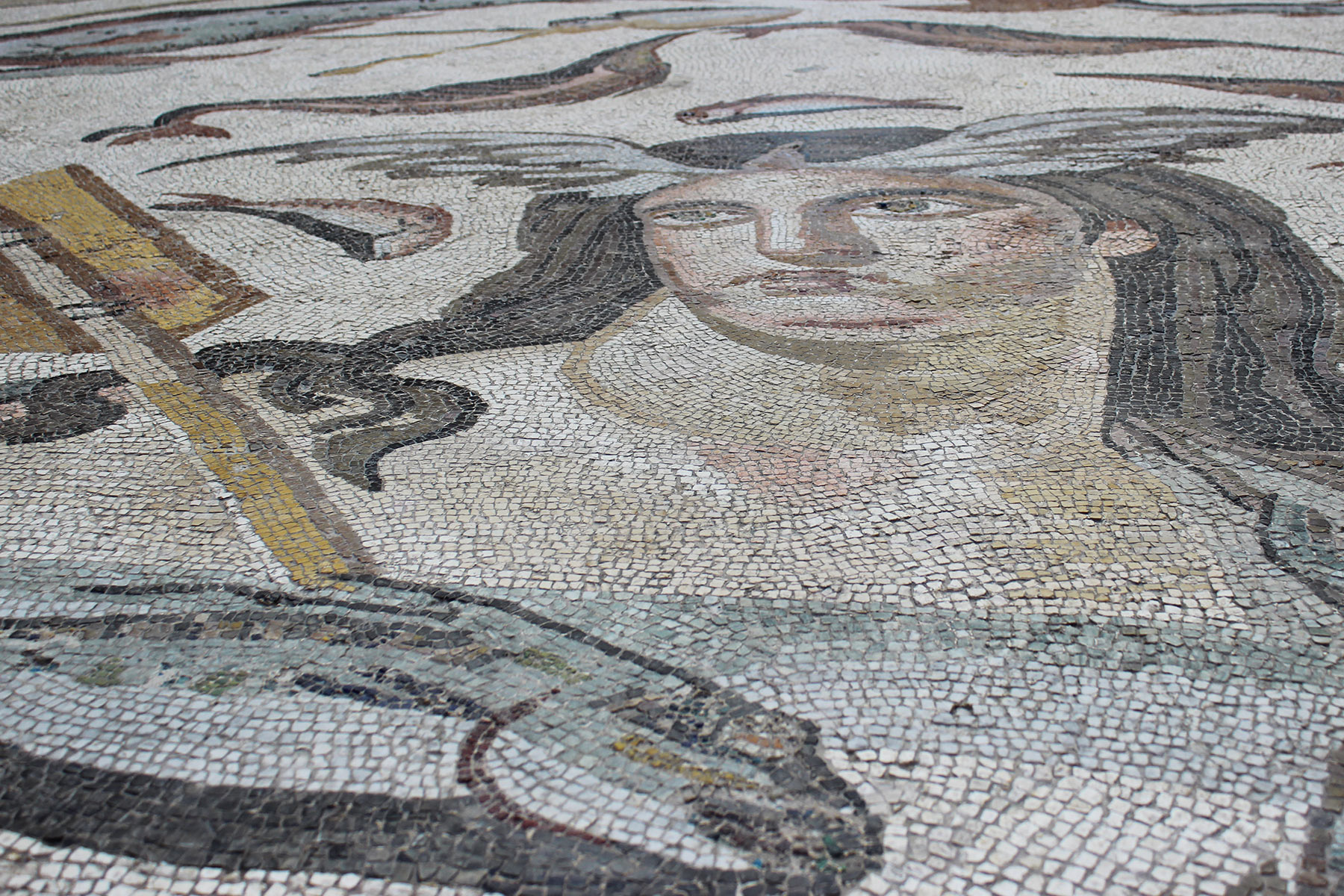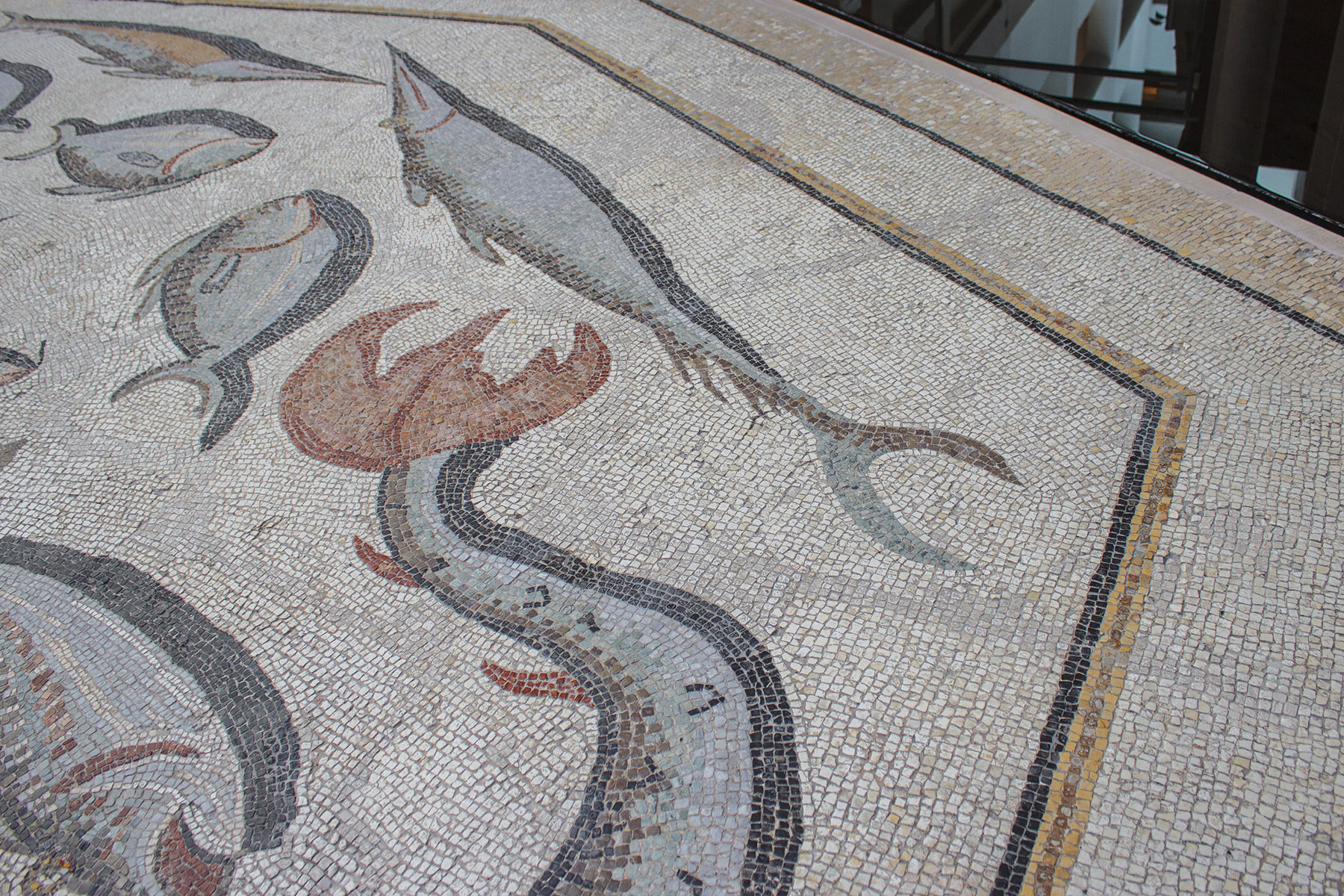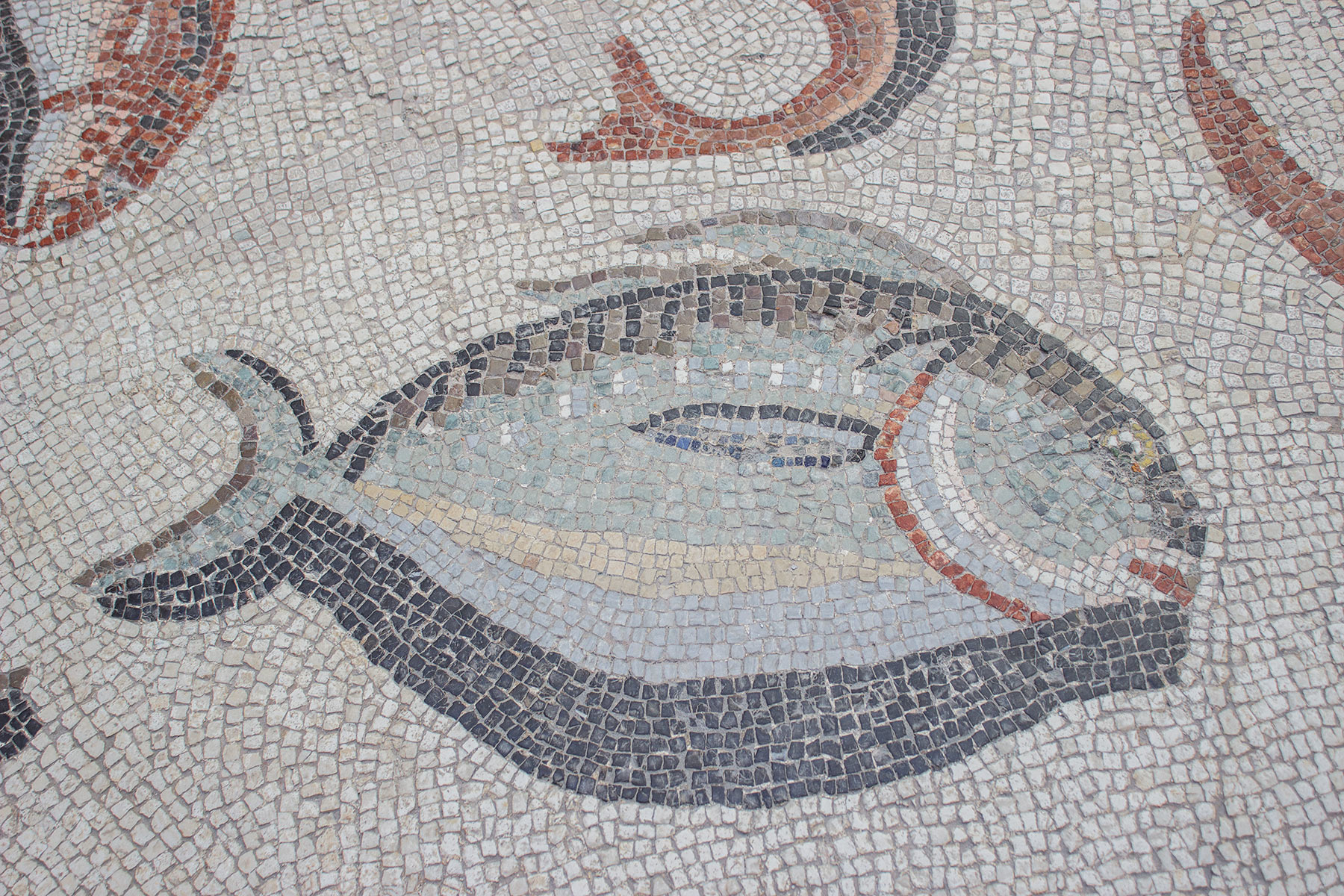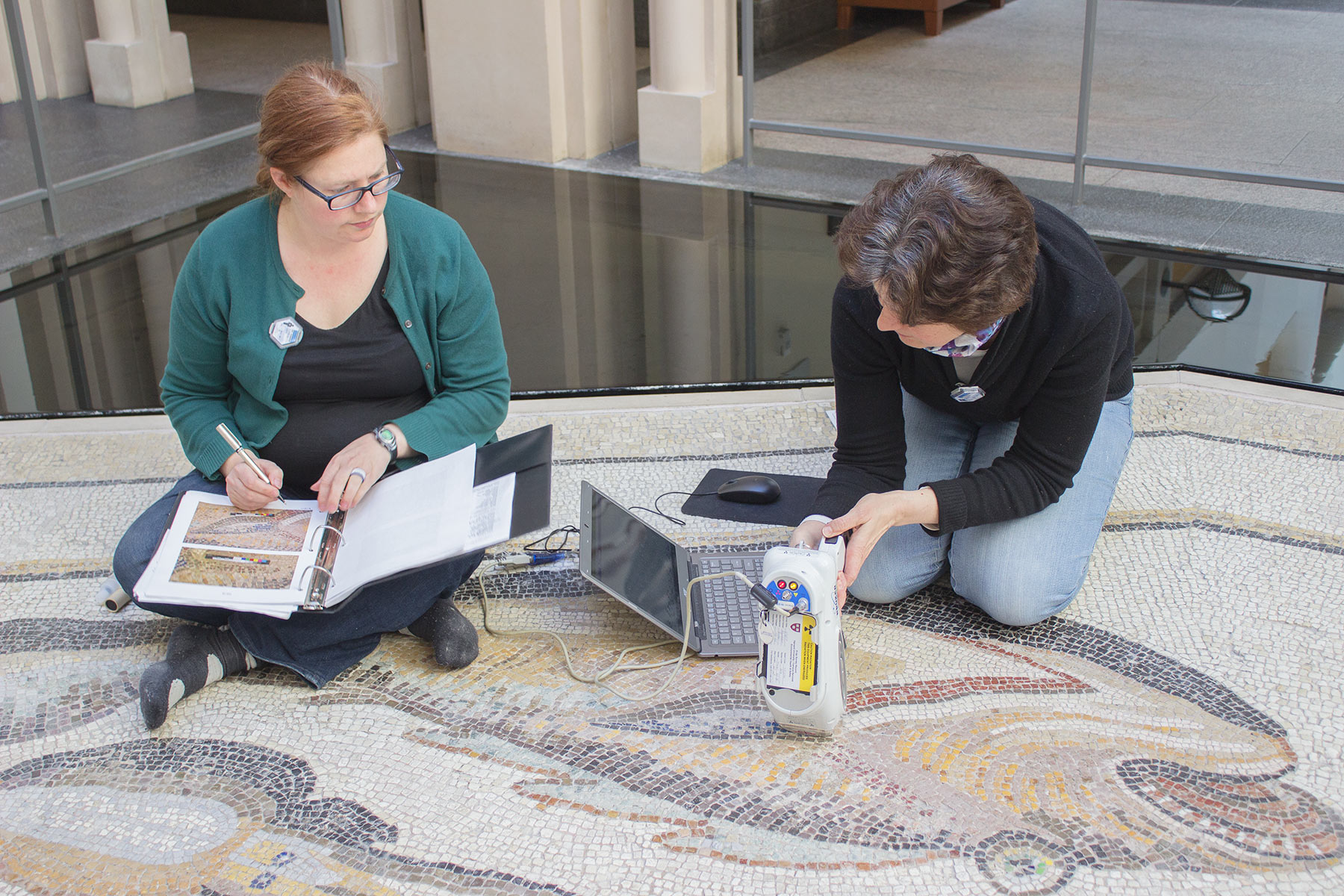One of the largest examples of ancient art on campus isn’t in the Harvard Art Museums at all, but across the Charles River at the Harvard Business School.
Nearly 21 feet in diameter, the enormous Roman floor mosaic greets students, faculty, and visitors as they enter the first-level atrium of Morgan Hall, an administrative building at the Business School. The mosaic is thought to date to the mid-fourth century CE and comes from the ancient Roman city of Antioch. At its center is a bust of the sea goddess Tethys, surrounded by 23 sea creatures of differing shapes and colors. The mosaic is not only a sight to behold, it also offers a treasure trove of information about the ancient world. Since early 2016, it has been the focus of an international study by a number of experts, including researchers at the Harvard Art Museums, designed to better understand its ancient and modern history.
Ancient Mosaics at Harvard
The Tethys mosaic first made its way to Harvard in 1939 as a result of the university’s participation in archaeological excavations at Antioch, located in modern-day Turkey. Harvard was just one member of the Committee for the Excavation of Antioch and Its Vicinity—a group of academic institutions that worked together to explore the city, including the Worcester Art Museum, Princeton University, and the Baltimore Museum of Art. The Fogg Museum received other mosaic pavements from Princeton, of which three remain in the collections but are not currently on view.
Unearthed in 1938, the Tethys mosaic was originally located in a pool in a bath building, where it was submerged in water. Following its excavation, the pavement was removed from the ground, cut into five pieces, and transported to Cambridge.
According to his personal writings at the time, Fogg Museum director Edward Forbes wished to install the pavement in the museum’s Calderwood Courtyard. However, logistics and a lack of funds prevented this idea from coming to be. The five pieces remained in boxes stored off-site and were not reunited until 1968, when they were installed in the outdoor garden pool at Dumbarton Oaks, a Harvard research center and museum in Washington, D.C.
In 1987, as the result of renovations at Dumbarton Oaks, the mosaic was deinstalled. The Harvard Business School acquired the mosaic in 1989 and installed it in the atrium at Morgan Hall in 1991.
New Research
During my time at the museums, I joined an international effort to learn more about the mosaic; the team includes Katherine Eremin, the Patricia Cornwell Senior Conservation Scientist in the Straus Center for Conservation and Technical Studies at Harvard; Elizabeth LaDuc, former objects conservation fellow in the Straus Center and now at University College London; Patrick Degryse of Katholieke Universiteit Leuven in Belgium; and Andrew Shortland of Cranfield University in England. The investigation has revealed much already about the mosaic’s subject and history. The sea goddess Tethys is not an unusual choice of subject for Antioch: the city was located on several bodies of water, and visual art from the area often includes marine themes.
Although the sea creatures surrounding Tethys are not entirely naturalistic, staff at Harvard’s Museum of Comparative Zoology helped identify several groups in the mosaic. These include mammals/dolphins, squid, goatfish, sea bream, and percoid fish (such as bass), many of which appear frequently in art from Antioch.





